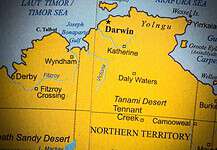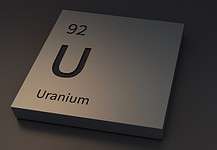CALIFORNIA’s Napa Valley is widely considered to be the US’s finest wine region: home to vineyards that produce some of the world’s most highly regarded wines. Yet the valley is more than just a destination for wine
enthusiasts – the broad range of sight-seeing opportunities and activities on offer makes it an ideal destination for holiday makers of all ages and interests.
The valley is in Northern California, at the north-eastern tip of San Francisco Bay (known as San Pablo Bay in the Napa Valley region), about an hour’s drive north of San Francisco.
To the west is the Sonoma Valley, to the north is Lake Country and to the east is the Sacramento Valley.
The Napa Valley is actually just one of many valleys in Napa County, but it’s by far the largest and best known. Napa County has a population of about 125,000 and five incorporated cities: Calistoga, St Helena, Yountville, Napa and, at the southern end, American Canyon. Angwin, Deer Park, Pope Valley, Rutherford and Oakville are communities with post offices but aren’t actual towns.
To the native Wappo Indians who first inhabited the valley, “Napa” meant a land of plenty: wildlife filled its waterways and broad green valley floor, and wild grapes grew in abundance. Early settlers recognised the valley’s potential for cultivating wine grapes, and the first local homestead was established in 1836 in the area now known as Yountville.
Early pioneers of the region’s wine industry included: John Patchett, who planted the first commercial vineyard in the region; Dr George Crane, who promoted the planting of grapevines through a series of newspaper articles; and Hamilton Walker Crabb, who experimented with more than 400 grape varieties.
Charles Krug is credited with establishing Napa Valley’s first commercial winery in 1861, and by 1889 there were more than 140 wineries in operation, including Schramsberg (founded in 1862), Beringer (1876) and Inglenook (1879). Today, Napa Valley is home to about 400 wineries and many more wine brands. The Napa Valley Grapegrowers Association, established in 1975, has seen both grape growers and vintners join forces on projects of common interest, devoting much of their time to an active marketing program. Accommodation styles in the valley are many and varied – from cosy local inns and small hotels to luxurious 5-star resorts complete with world-class restaurants and spas – with options available to suit almost any taste and budget. Getting around the Napa Valley region by car is easy, but there are also bike tours, hot air balloon rides and boat tours of the Napa River on offer – all of which offer unique perspectives of the valley’s beautiful natural scenery. A local charter company also offers helicopter tours that can be tailored to fit visitors’ wine tasting itineraries – a unique way to avoid the ‘who’s the designated driver?’ debate.
Wine naturally forms a large part of Napa Valley’s culture and, along with it, food. Restaurants across the region are renowned for their industry-leading chefs and award-winning menus, and many tourists plan their visit simply around tasting wine and eating some of California’s best fare. Wine tours abound, but many visitors prefer to plot their own tasting itinerary, and an interactive wineries map can be found on napavalley.com
to make planning easier.
For visitors looking for a chance to step behind the stove, there are a number of highly regarded cooking schools in the region that offer classes using local ingredients. The Culinary Institute of America’s California campus operates from the beautiful, historic Greystone building in St Helena. It is a must-visit destination for cooking enthusiasts, who can attend a public cooking demonstration, discover recipes created for the home cook and watch professional culinary techniques in action.
When visitors need a break from eating and drinking, exploring the region’s towns is a relaxing way to learn more about what each area has to offer. Unique shops and galleries showcase the talents of artists and designers
from the local area and across the US, and their wares make perfect gifts or souvenirs. For those not so interested in shopping there are numerous local museums and heritage sites to visit that delve into the history of the region, allowing visitors to learn more about why it is so unique. Napa County Landmarks and the Napa County Historical Society can both help tourists to create their own lists of ‘things to see’ while touring. Exploring Napa Valley State Park’s amazing hiking trails is also an important part of any visit to the region, offering a close-up look at its natural beauty. There are more than 16km of trails to explore, and the Napa Valley
State Parks Association can provide maps, camping reservations and other important information for visitors. For night-time entertainment, the Napa Valley Opera House in the heart of downtown Napa and the Lincoln Theatre on the beautiful grounds of the historic Veteran’s Home in Yountville both offer a regular schedule of world-renowned performances for tourists looking for some extra culture. During the summer months, visitors can also spend an evening outdoors at one of the many wineries that showcase live music – with gourmet food hampers and fine wines on offer as the perfect accompaniments to any performance. Qantas flies from Sydney to San Francisco, through Los Angeles or Dallas Fort Worth, from about $1500 (subject to travel dates, flight availability and itinerary). There are no commercial air services direct to Napa Valley, but private charter planes can land at Napa Valley Airport. Most visitors choose to fly into San Francisco and then hire a car to drive to the Napa Valley region.
For more information about Napa Valley wineries, restaurants, accommodation and activities, visit www.napavalley.com
By Amy Mattes-Harris








































